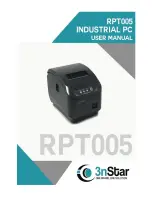
General Instructions
2
2-2 | UR11
Pre-charge Circuit:
transitional stage of the UR11 operation, which starts when the power is applied to the
input phases and ends with the complete charging of the DC link capacitors of the inverter connected to its
output. This step is controlled by the UR11, which performs the loading of DC link capacitors through a voltage
ramp with limited current, avoiding high current spikes on the inverter startup.
DC Link:
inverter intermediate circuit with DC voltage and current, obtained from the rectification of the AC
supply voltage via UR11, or from an external source; it supplies the output IGBTs inverter bridge.
Inverter Circuit:
circuit to modify the DC voltage of the DC Link.
Diode:
basic component of the input rectifier bridge. It works like an electronic key (controlled by the voltage
polarity of the anode and cathode terminals), in the following modes: conduction (closed switch, terminals
directly polarized) and blocked (open switch,terminals reversely polarized).
Thyristor (SCR):
Silicon-Controlled Rectifier; basic component of the input rectifier. It works like a diode but
it needs a voltage pulse in the gate terminal to be able to get into the conduction mode, besides the proper
polarization of the anode and cathode terminals, which allows the control of the starting conduction angle.
IGBT:
Insulated Gate Bipolar Transistor; basic component of the output inverter bridge. The IGBT works as an
electronic switch in the saturated (closed switch) and cut-off (open switch) modes.
Braking IGBT:
operates as a switch for the activation of the braking resistor. It is commanded by the DC Link
level, through the output inverter.
R, S e T Arm:
it is a set of one diode and one thyristor of the R, S and T phases of the rectifier input.
Power Modules U, V, and W:
set of two IGBTs of the inverter output phases U, V, and W.
Bridge 1 (and bridge 2):
it is a set of three thyristors and three diodes, making a semi-controlled rectifier unit.
6 Pulses Rectifier:
three-phase rectifier configuration, where each power diode operates for 120° and
commutates every 60°, performing six commutations in one cycle of the power supply.
12 Pulses Rectifier:
six-phase rectifier configuration, regularly available through a phase shifting transformer
with two secondaries connected in delta and star, where each power diode operates for 120° and commutates
every 30°, performing twelve commutations in one cycle of the power supply.
PTC:
resistor which resistance value in ohms increases proportionally to the temperature increase; used as a
temperature sensor in electrical motors.
NTC:
resistor which resistance value in ohms decreases proportionally to the temperature increase; used as a
temperature sensor in power modules.
PE:
Protective Earth.
RFI Filter:
Radio-Frequency Interference Filter for interference reduction in the Radio-Frequency range.
PWM:
Pulse Width Modulation; pulsed voltage that feeds the motor.










































